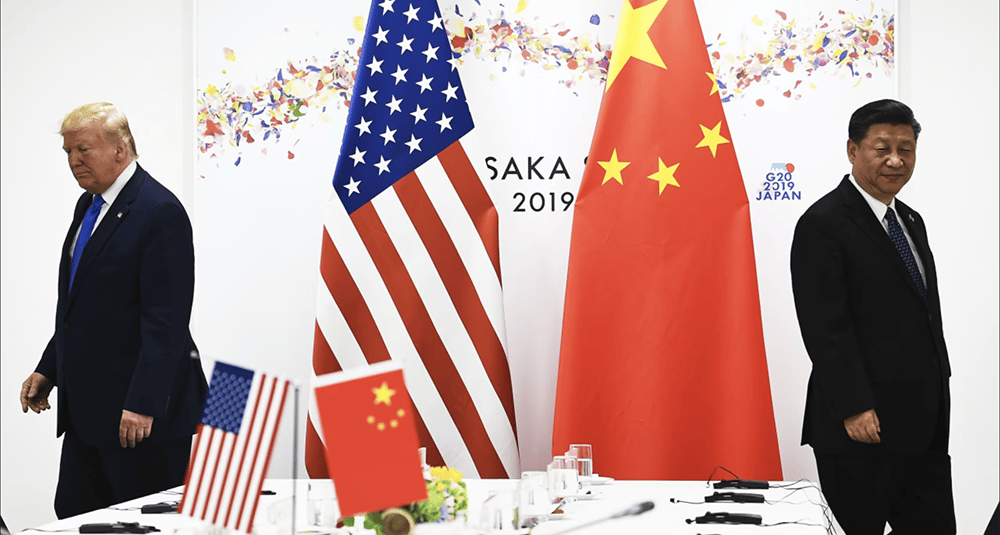Who Owns America’s Debt? Exploring U.S.-China Financial Ties and Diplomatic Tensions
4/27/20253 min read


Who Owns America’s Debt? Exploring U.S.-China Financial Ties and Diplomatic Tensions
The United States’ national debt is a staggering $36.22 trillion as of January 2025, a figure that sparks curiosity about who holds the keys to this financial giant. Foreign countries own about $7.9 trillion, or 22.9%, of U.S. Treasury securities, with Japan and China leading the pack. But it’s the U.S.-China financial relationship—layered with economic dependency, political friction, and recent controversies—that demands a closer look. From debt holdings to diplomatic missteps, this blog dives into the numbers, the annual costs, and the delicate balance of U.S.-China relations, especially during tough times like the COVID-19 pandemic.
The Top 20 Countries Holding U.S. Debt
As of November 2024, here’s how the top 20 countries stack up in holding U.S. Treasury securities, based on the latest data:
Japan: $1.09 trillion
China: $768.6 billion
United Kingdom: $765.6 billion
Luxembourg: $424 billion
Cayman Islands: $419 billion
Canada: $379 billion
Belgium: $375 billion
Ireland: $336 billion
France: $332 billion
Switzerland: $289 billion
Taiwan: $282 billion
Hong Kong: $255 billion
Singapore: $240 billion
Brazil: $225 billion
Germany: $223 billion
South Korea: $211 billion
India: $208 billion
Netherlands: $205 billion
Australia: $195 billion
Norway: $190 billion
Japan remains the largest foreign creditor, but China’s $768.6 billion stake, though down from $1.1 trillion in 2017, still makes it a significant player. These holdings reflect global confidence in U.S. Treasuries as a safe investment, but they also tie the U.S. economy to foreign governments, especially China.
U.S. Debt to China: The Numbers
China’s $768.6 billion in U.S. debt represents about 9.6% of foreign-held U.S. debt and less than 3% of the total public debt. This is a notable decline from its peak of $1.146 trillion in 2017, as China has been selling off Treasuries to diversify its reserves and bolster its yuan. Why does China buy U.S. debt? It’s strategic: holding Treasuries keeps the yuan pegged to the dollar, making Chinese exports cheaper and supporting its trade surplus. It’s a win-win—China fuels its economy, and the U.S. gets low-cost goods and capital.
But what does the U.S. pay China annually? The U.S. pays interest on its Treasuries, with rates varying by bond maturity (typically 2-4% for 10-year notes). Assuming an average yield of 3%, China earns roughly $23 billion annually in interest from its $768.6 billion holdings. This is a small fraction of the $870 billion in total interest payments the U.S. made in 2024, most of which goes to domestic holders like the Federal Reserve and Social Security trust funds. These payments are routine, but they highlight the financial interdependence between the two nations.
U.S.-China Relations: A Fragile Friendship
The U.S.-China relationship has been a rollercoaster, marked by trade wars, geopolitical tensions, and moments of cooperation. Former presidents, from Nixon’s 1972 visit to Obama’s climate agreements, worked to build bridges. But recent years have seen strains—tariffs, tech bans, and rhetoric over COVID-19’s origins have tested this “friendship.” During the pandemic, China’s role as a creditor was critical. While foreign ownership of U.S. debt dipped early in 2020 as countries like China sold Treasuries for liquidity, China resumed buying by late 2020, stabilizing U.S. markets. This financial support helped the U.S. fund stimulus packages, keeping the economy afloat during lockdowns.
Yet, gratitude for this support has been overshadowed by political barbs. In 2024, Senator JD Vance sparked controversy by referring to Chinese workers as “peasants” in a speech criticizing U.S. reliance on Chinese manufacturing. The comment drew ire for its disrespect, ignoring China’s economic contributions and the mutual benefits of trade. Such rhetoric risks alienating a key partner, especially when diplomacy is needed to navigate debt, trade, and global challenges. Critics argue that focusing on COVID-19’s origins or inflammatory labels distracts from appreciating China’s role in global stability, like its $4 trillion in financial inflows to low- and middle-income countries, including the U.S., from 2012-2022.
Tough Times and Mutual Dependency
The COVID-19 pandemic underscored U.S.-China interdependence. As the U.S. debt soared to $27.7 trillion by late 2020, China’s holdings provided a buffer, ensuring demand for Treasuries despite global uncertainty. This wasn’t charity—China benefits from a strong U.S. economy to buy its exports. But it was a lifeline, and dismissing it with divisive rhetoric, as Vance did, undermines decades of diplomatic work. The U.S. must balance holding China accountable with recognizing its role as a creditor and trade partner.
Looking Ahead
The U.S.-China financial relationship is a double-edged sword—mutual benefits come with risks. If China dumped its Treasuries, it could spike U.S. interest rates, but it would also hurt China’s export-driven economy. Both sides have incentives to cooperate, yet political posturing threatens progress. As the U.S. navigates its $36.22 trillion debt, diplomacy, not division, will be key.
Thought Questions:
How should the U.S. balance gratitude for China’s financial support with addressing geopolitical tensions?
Do comments like JD Vance’s “Chinese peasant” remark harm U.S.-China relations more than policy differences?
Can the U.S. reduce its reliance on foreign debt without disrupting its economy or global trade?
Photo Credit: Gettyimage
hello@boncopia.com
+13286036419
© 2025. All rights reserved.